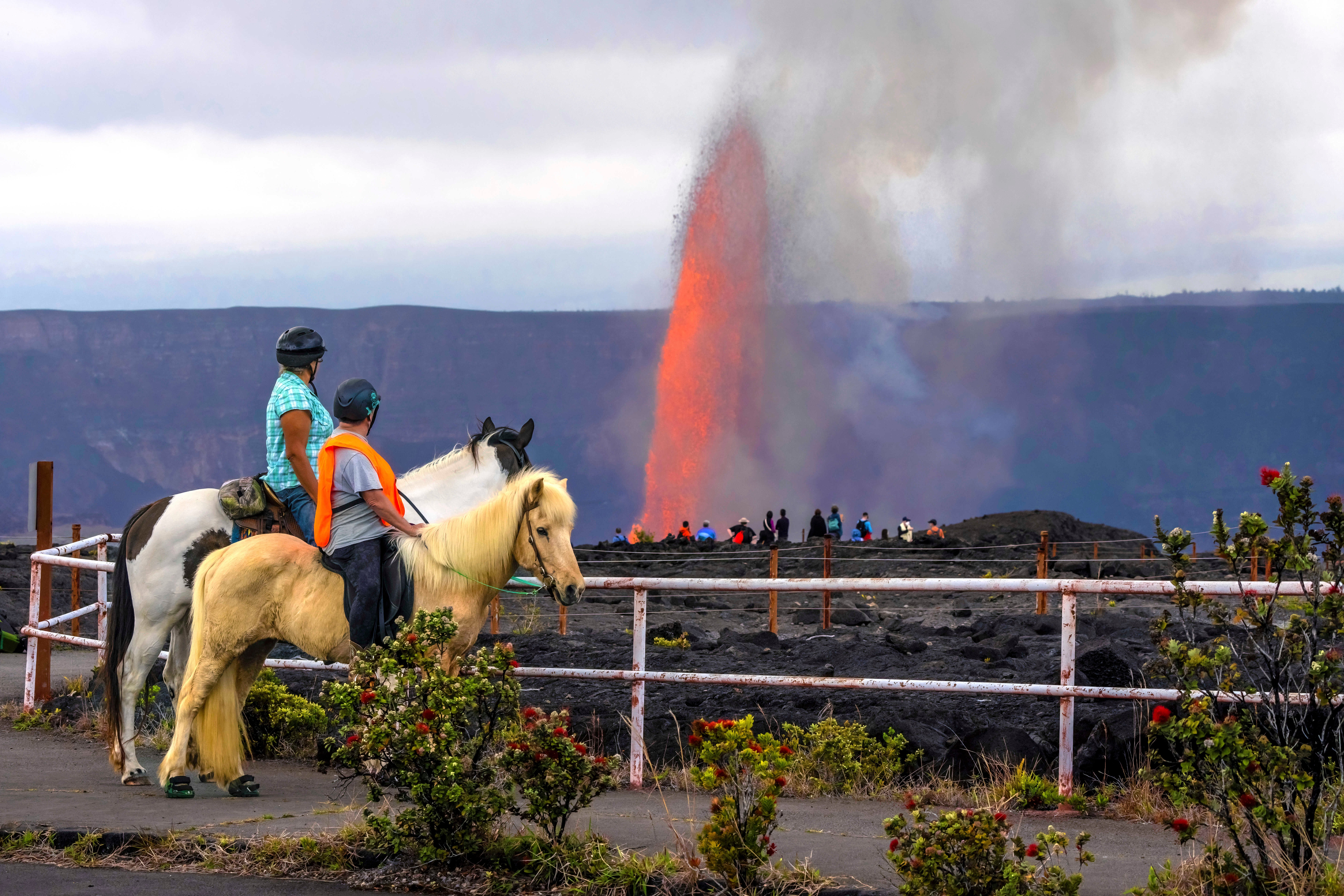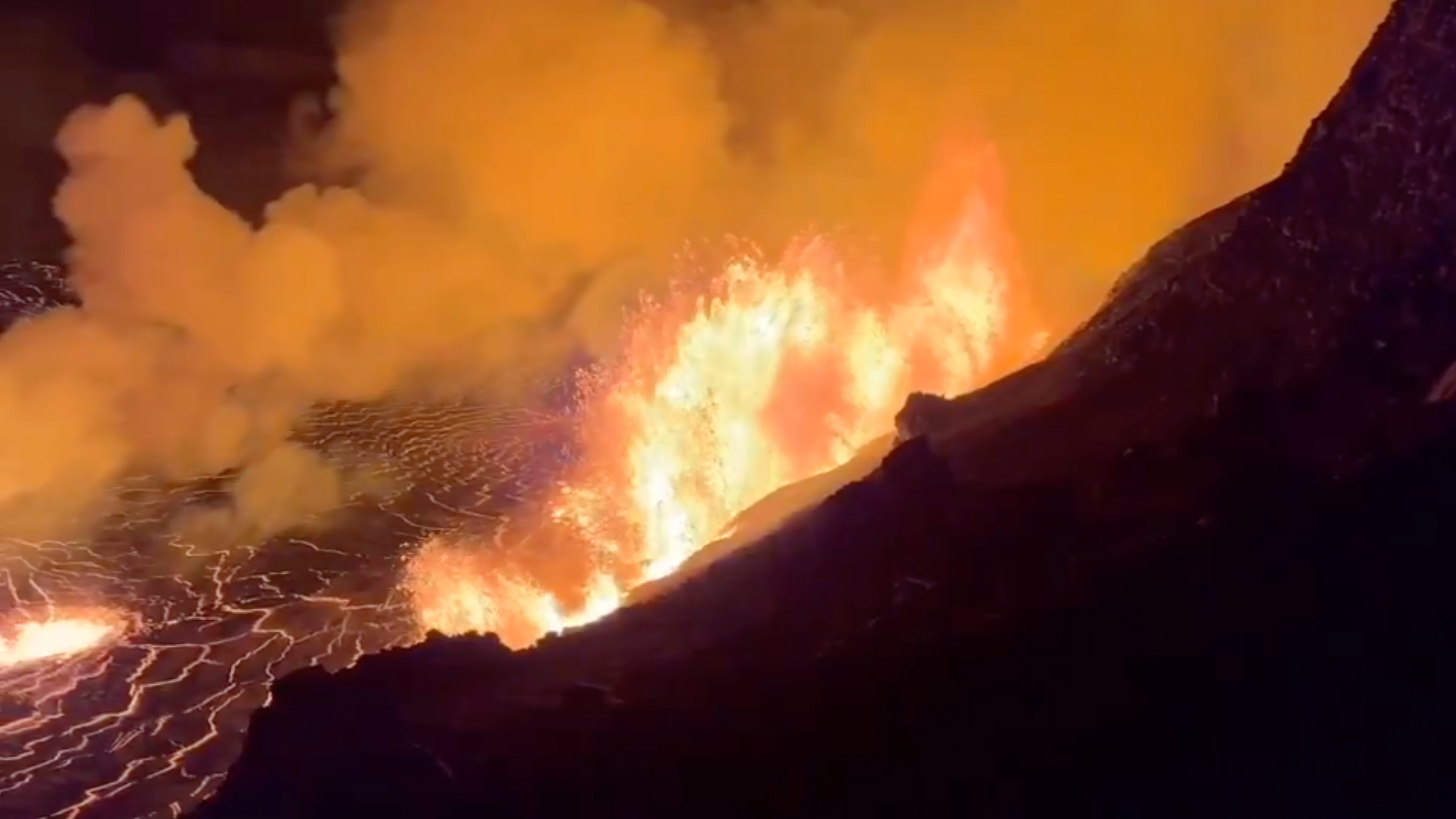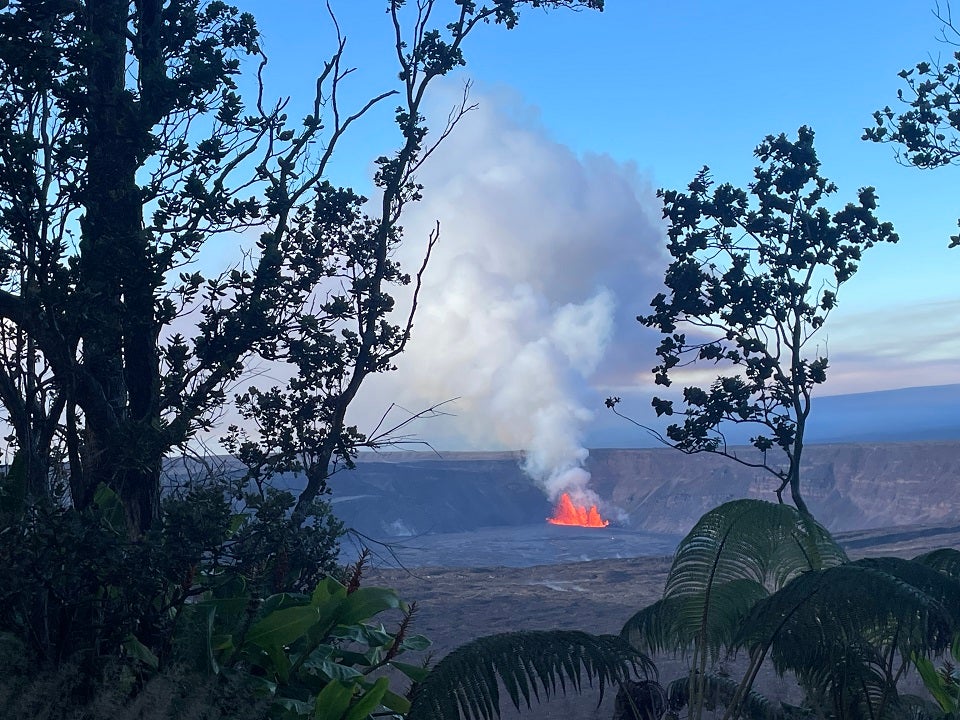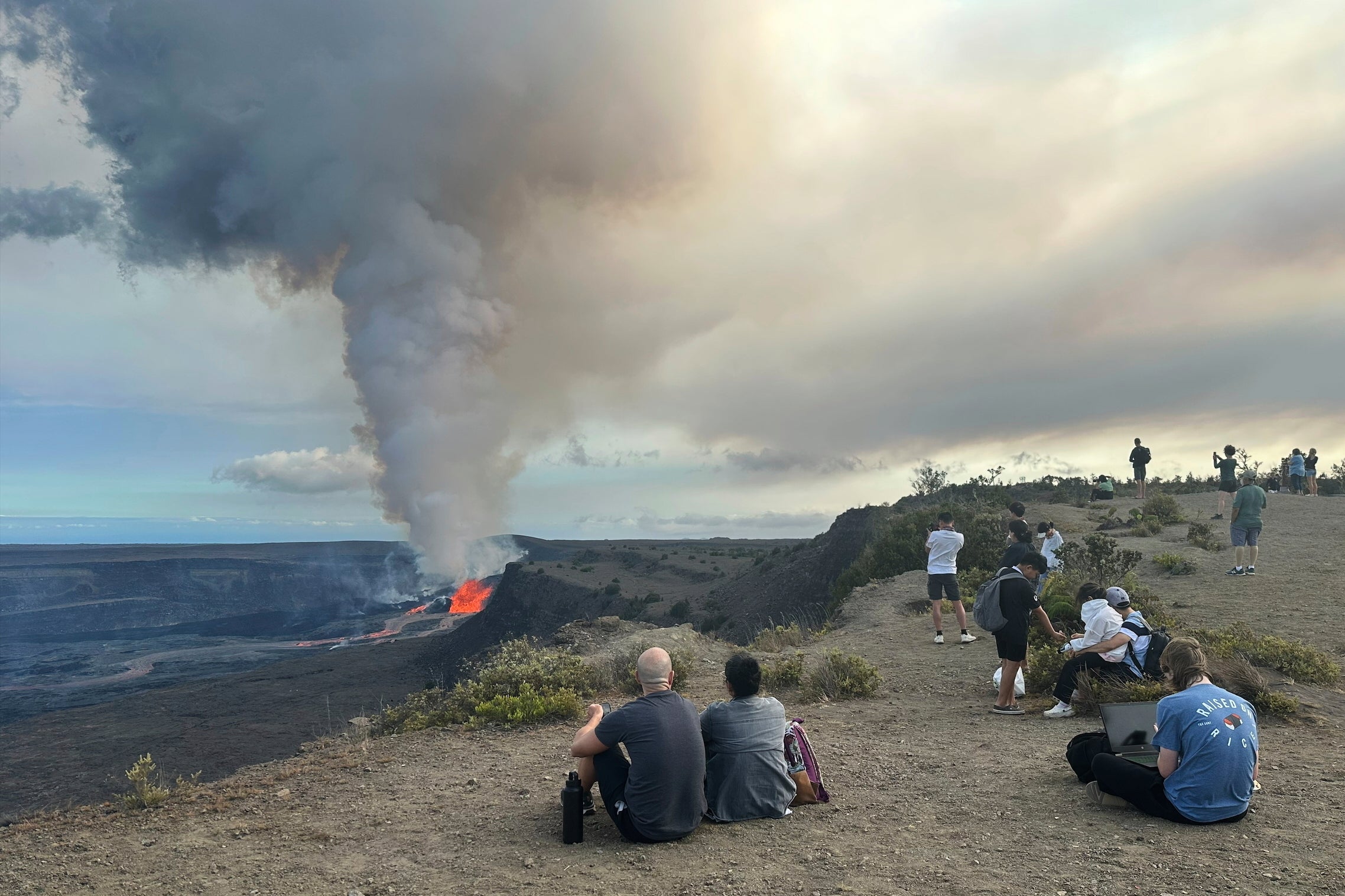Molten rock is currently erupting from two vents simultaneously at Kilauea volcano, with lava shooting high into the sky and illuminating the night with a vivid red and orange glow across its summit crater.
Scientists anticipate the volcano, renowned as one of the world’s most active, will gush lava again in the coming days, marking its 31st eruption since December.
While a select few residents and visitors will witness the spectacle firsthand at Hawaii Volcanoes National Park, hundreds of thousands more are expected to tune into popular livestreams.
These online feeds are made possible by three camera angles set up by the US Geological Survey, offering a virtual front-row seat to the natural phenomenon.
Among those captivated by Kilauea’s power is Park Service volunteer Janice Wei, who rushes to capture photos and videos of Halemaumau Crater whenever an eruption begins.
Native Hawaiian tradition holds that this crater is the sacred home of the volcano goddess Pele. Wei describes the sound of the molten rock, as it shoots skyward like a fountain, as akin to a roaring jet engine or crashing ocean waves, noting she can feel its intense heat from over a mile away.
“Every eruption feels like I am sitting in the front row at nature’s most extraordinary show,” Wei shared in an email.
Kilauea is situated on Hawaii Island, the largest landmass in the Hawaiian archipelago. It lies approximately 320 kilometres (200 miles) south of Honolulu, the state’s largest city, which is located on Oahu.
Here’s what to know about Kilauea’s latest eruption:
Towering fountains of molten rock

A lower magma chamber under Halemaumau Crater is receiving magma directly from the earth’s interior about 5 cubic yards (3.8 cubic meters) per second, said Ken Hon, the scientist-in-charge at the Hawaiian Volcanoes Observatory.
This blows the chamber up like a balloon and forces magma into an upper chamber. From there, it gets pushed above ground through cracks.
Magma has been using the same pathway to rise to the surface since December, making the initial release and subsequent episodes all part of the same eruption, Hon said.
Many have featured lava soaring into the air, in some cases more than 1,000 feet (300 meters) The fountains are generated in part because magma — which holds gasses that are released as it rises — has been traveling to the surface through narrow, pipe-like vents.
The expanding magma supply is capped by heavier magma that had expelled its gas at the end of the prior episode. Eventually, enough new magma accumulates to force the degassed magma off, and the magma shoots out like champagne bottle that was shaken before the cork was popped.
This is the fourth time in 200 years that Kilauea has shot lava fountains into the air in repeated episodes. There were more episodes the last time Kilauea followed this pattern: the eruption that began in 1983 started with 44 sessions of shooting fountains.
Those were spread out over three years, however. And the fountains emerged in a remote area so few got to watch.
The other two occurred in 1959 and 1969.
Predicting Kilauea’s future

Scientists don’t know how the current eruption will end or how it may change. In 1983, magma built enough pressure that Kilauea opened a vent at a lower elevation and started continuously leaking lava from there rather than periodically shooting out of a higher elevation.
The eruption continued in various forms for three decades and only ended in 2018.
Something similar could happen again. Or the current eruption could instead stop at the summit if its magma supply peters out.
Scientists can estimate a few days or even a week ahead of time when lava is likely to emerge with the help of sensors around the volcano that detect earthquakes and miniscule changes in the angle of the ground, which indicate when magma is inflating or deflating.
“Our job is like being a bunch of ants crawling on an elephant trying to figure out how the elephant works,” Hon said.
The lava fountains have been shorter lately. Steve Lundblad, a University of Hawaii at Hilo geology professor, said the vent may have gotten wider, leaving molten rock less pressurised.
“We’re still gonna have spectacular eruptions,” he said. “They’re just going to be be wider and not as high.”
Carrying stories of Pele

Some people may see lava flows as destructive. But Huihui Kanahele-Mossman, the executive director of the Edith Kanakaʻole Foundation, said lava is a natural resource that hardens into land and forms the foundation for everything on Hawaii Island.
Kanahele-Mossman’s nonprofit is named after her grandmother — the esteemed practitioner of Hawaiian language and culture, and founder of a noted hula halau, or school. Hālau o Kekuhi is celebrated for its mastery of a style of hula rooted in the stories of Pele and her sister, Hiʻiaka.
Kanahele-Mossman has visited the crater a few times since the eruption began. She initially watches in awe and reverence.
But then she observes more details so she can go home and compare it to the lava in the centuries-old tales that her school performs.
At the crater, she delivers a chant prepared in advance and places offerings. Recently she presented awa, a drink made with kava, and a fern lei.
“You as the dancer, you are the storyteller and you carry that history that was written in those mele forward,” she said, using the Hawaiian word for song. “To be able to actually see that eruption that’s described in the mele, that’s always exciting to us and drives us and motivates us to stay in this tradition.”
Visiting the volcano

Park visitation has risen all eight months of the year so far, in part because of the eruption. In April, there were 49 per cent more visitors than the same month of 2024.
Park spokesperson Jessica Ferracane noted that the last several episodes have only lasted about 10 to 12 hours.
Those wanting to go should sign up for U.S. Geological Survey alert notifications because the eruption could be over before you know it, she said.
She cautioned that visitors should stay on marked trails and overlooks because unstable cliff edges and earth cracks may not be immediately apparent and falling could lead to serious injury or death. People should also keep young children close.
Volcanic gas, glass and ash can also be dangerous. Those visiting at night should bring a flashlight.



